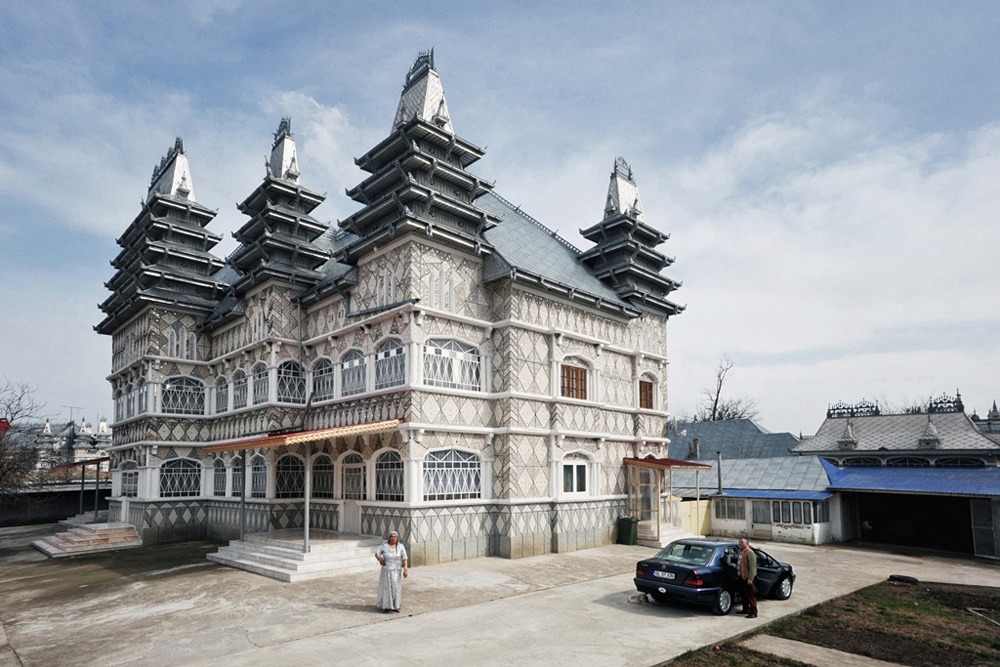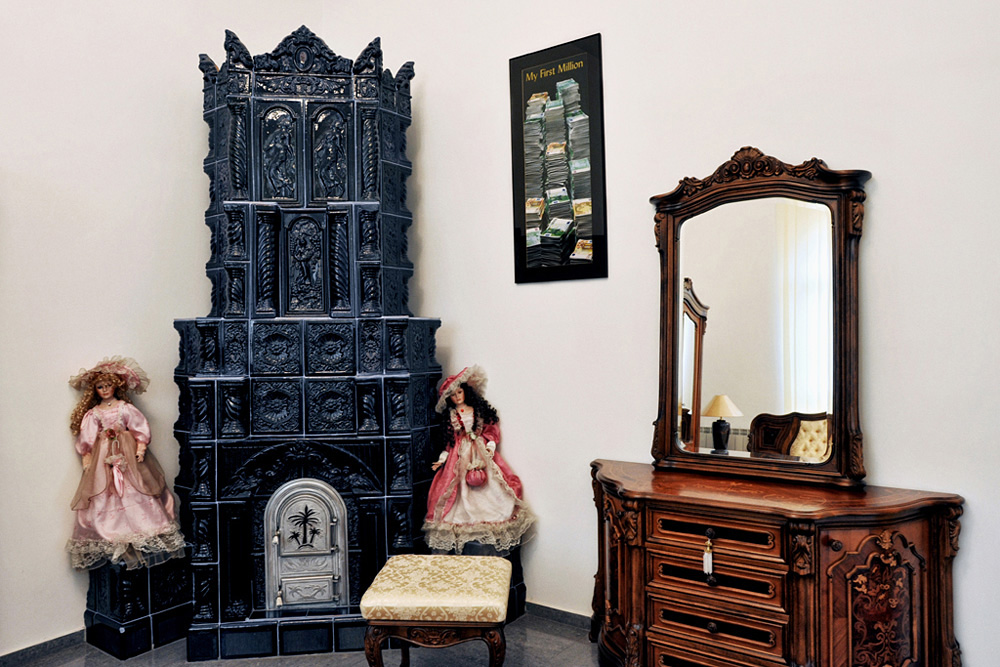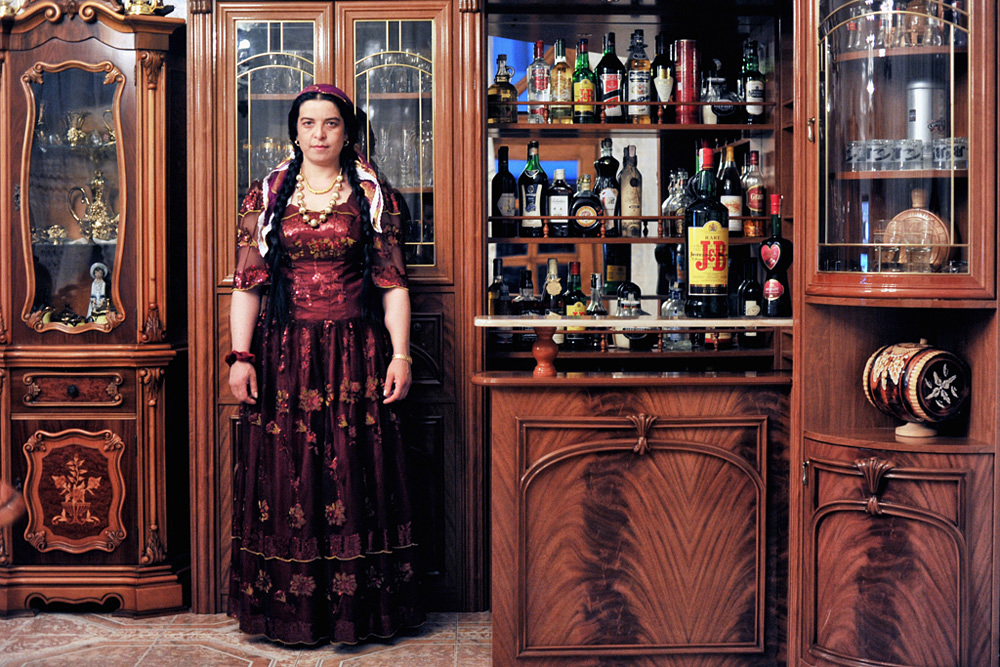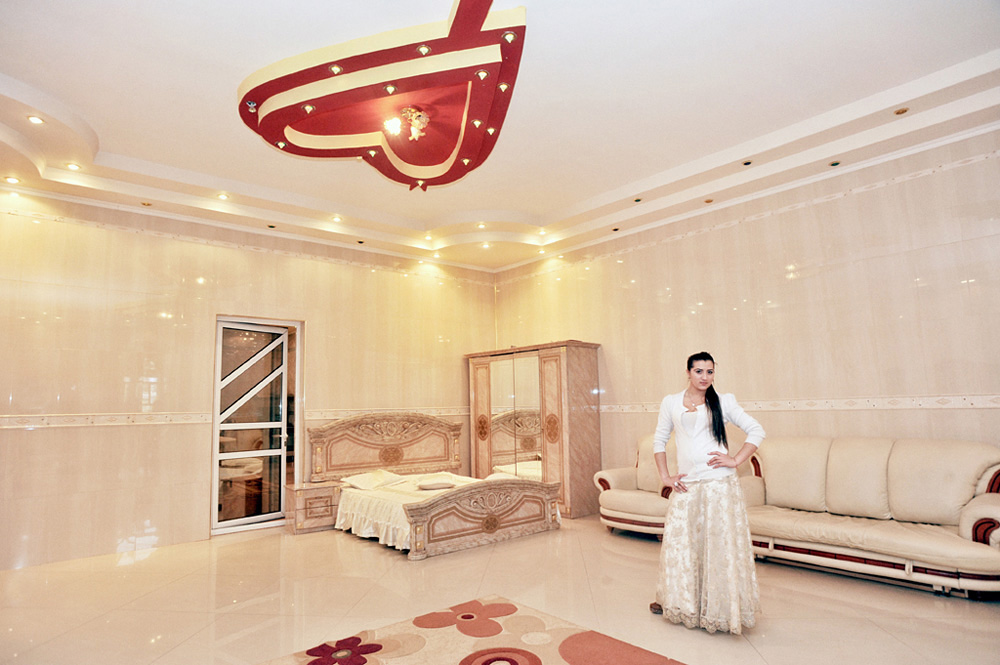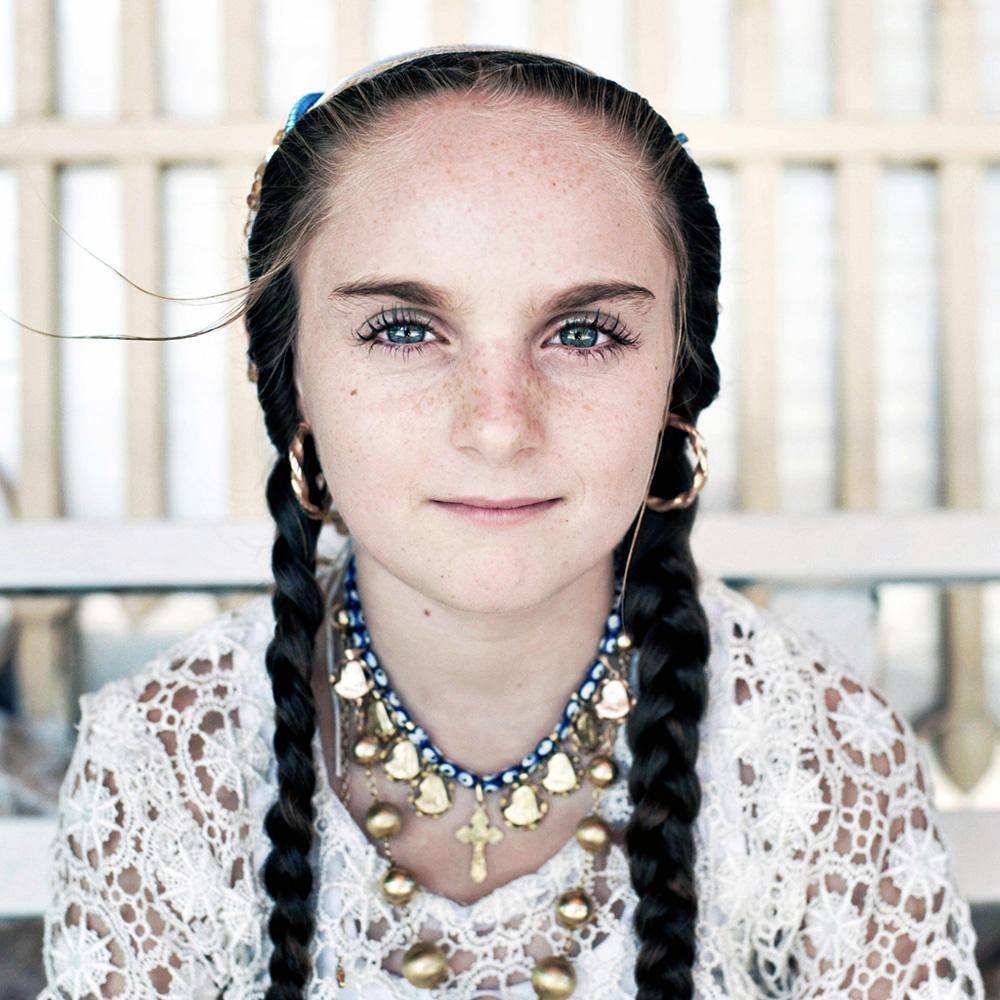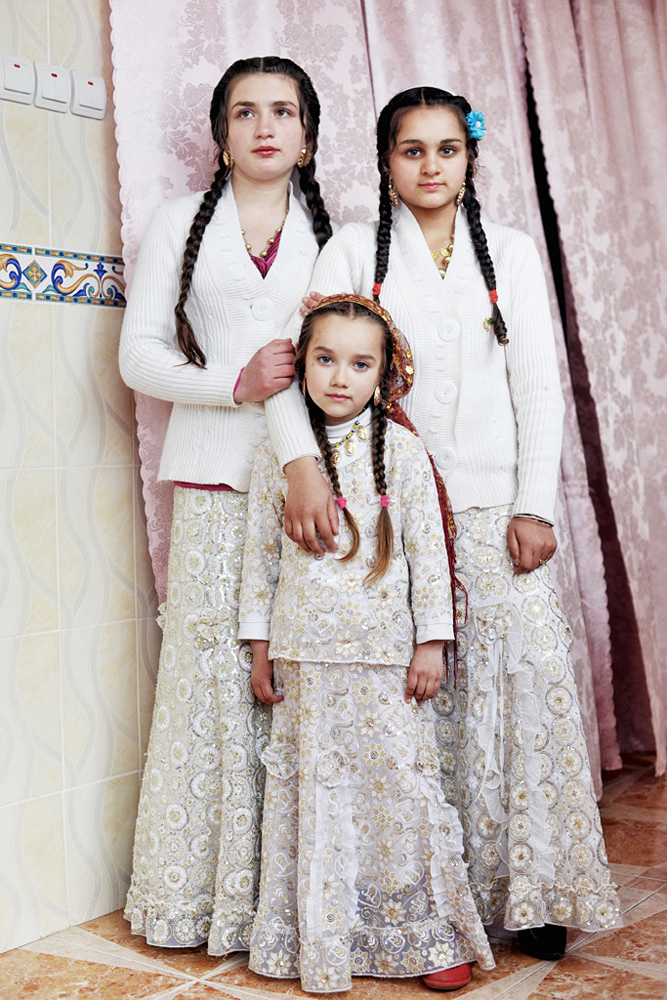Artist Blog
Every week an artist whose single image was published by Der Greif is given a platform in which to blog about contemporary photography.
Sébastien Cuvelier: Gypsy Queens
Apr 14, 2014 - Raoul Ries
Sébastien Cuvelier's series 'Gypsy Queens' portraits a community that seems keen on a prominent display of wealth and opulence. The houses, interiors and women shown all suggest a shared sense of aesthetics that might seem peculiar to outsiders. For a while I wondered what may trigger this impression of wonderful weirdness. Maybe the 'Gypsy Queens' ostensibly over-the-top decoration and unashamed demonstration of affluence challenge the idea that prosperity and achievement should be hidden rather than flaunted. Maybe their distinction suggests a community closed to outsiders. I wanted to know the background of that project and asked Sébastien Cuvelier about it. R: A few years ago you went on a one year sabbatical to travel and to take photographs. How did that influence what you do today,how you see the world today? S: Travelling for one year is an incredible experience I would recommend to anyone. Apart from the obvious amazing memories I have from this trip, one of the main take-aways is probably how I developed a relationship with time: the more I was travelling, the more I wanted to spend extra time wherever I was. It helped me develop a mindset which is not easily attainable with regular, two to three-week trips. Photography-wise, I think it taught me to stick with a project for a long time. I may not be in a position to travel for a very long time at once, but if the project involves travelling somewhere, then I would go there back and forth until I feel I have attained my objectives. R: You have been photographing in Romania for several years. How did this change influence your editing of the photographs into projects? S: I went to Romania four times between 2011 and 2013. It started as a discovery trip and ended up in a book about rich Gypsy communities. The editing process got much easier during my third trip, as I decided to focus only on women in these communities, to give a sharper and more poetic edge to the series. However, the real hard task was to select 60 pictures for the book, out of a first cut of several hundreds... On the side, travelling frequently to Romania made me also appreciate the country a lot, so apart from this main project, I took a lot of other pictures, which I have not really edited much so far. I still think of using them in another project one day, linked to some more travel and nostalgia-related type of work. R: How did you discover the Gypsy queens? How did your relationship with their community evolve over that time? S: It started with seeing a picture of an incredible house through a random Google search. Once I established where this house was located, I decided to go there, and then went again and again, rented a car and drove all around Romania. I found five large communities in the end. I travelled everywhere with a friend (Andreea) who was helping me with translation and added a female presence, which I think was quite important in order to interact with women. I could not have done this project without her, as she allowed me to speak with them, ask questions, etc. Going there several times helped build trust, as they did recognize us every time we would go back, but I would not say we really developed a true, intimate relationship with the Gypsy communities. What they wanted most was to see the pictures I was bringing at each trip! (I printed out lots of pictures and gave them away as a means to break the ice and build trust) R: How do you approach a new subject, how do you develop the project? S: I believe every situation is different. What I learned from the Gypsy Queens project was to spend a lot of time talking to people, gaining their trust before even taking the camera out of the bag. I have also asked for advice and guidance from a lot of people along the way (friends, photographers), which was very rewarding. For other projects, I may be more spontaneous, depending on the theme and the difficulty to get access to the subject. R: Where do you want to go from here? Do you have plans for other series? S: I have two series in the making. One is a collection of portraits of the independent music scene, taken with a Polaroid camera only, which I have started five years ago. Being a music lover, I have learned to find ways to get access to a lot of artists I like and take a quick snapshot of them. This is a type of project that can last a lifetime, but I feel that five years is a good milestone to keep the "Zeitgeist" of the music scene, so I am working on a book dummy right now, which could be published as early as this summer under the name "Instant Star". The other project is about an old apartment complex in Seoul, South Korea. I have been there more than 15 times and found that these derelict buildings tell the story of modern Korea through their walls and their inhabitants. This particular set of buildings has been around ever since Korea started to develop, and is still up today, in a very bad state yet with some of the highest rents in Seoul. I have been inside a dozen apartments so far, photographing women only as their husbands work crazy hours somewhere out of town. I like to think of this work as a natural follow-up to Gypsy Queens, focusing on women in a relatively not well known community. My objective is to go there a couple more times and publish a book about it, hopefully in 2015. R: Thank you Sébastien. Sébastien Cuvelier's work can be seen on www.sebweb.org


